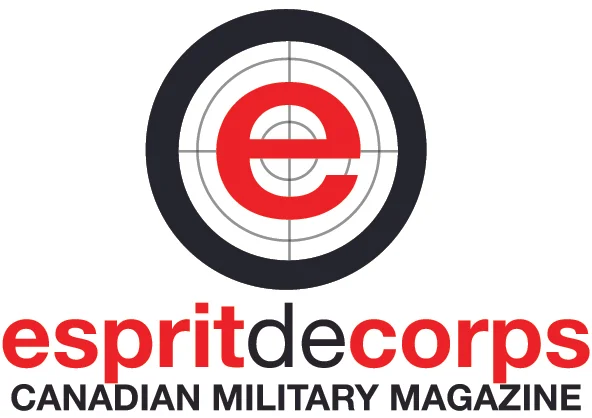Esprit de Corps was created in 1988 by Scott and Katherine Taylor, and originally took the form of an inflight magazine when the Canadian Armed Forces operated a fleet of five passenger-carrying 707s.
The initial bilingual seatback magazine was created, as Taylor put it, “to contribute to the esprit de corps that has made the Canadian military one of the finest professional armed forces in the world today.”
That comment resulted in swift action from the Department of National Defence, who moved to censor the magazine from the eyes of Canadian Armed Forces personnel by removing it from all chartered Air Canada flights. The Taylor’s, realizing that such a move would deal a devastating blow to their company, countered by reaching out to the media with details of the censorship, and signalled their intention to issue a press release fingering DND’s own publication, Canadian Defence Quarterly, with allegations of corruption. DND relented, and Esprit de Corps was reinstated on the flights.
The ‘90s were a defining time for Esprit de Corps, and their exposés on corruption in the military did much to lend them credibility among its readership, especially the rank-and-file in the CAF. In 1998, Esprit de Corps expanded to include book publishing; its first title, Tested Mettle, was written as a companion to the highly-successful Tarnished Brass: Crime and Corruption in the Canadian Military.
Sometime after the year 2000, the leadership and collective attitude of DND began to change; senior brass and bureaucrats on the receiving end of Esprit de Corps investigative reporting were either retiring or been forced out, and those coming up under them appeared to empathize with the magazine’s dedication to ensuring that the Canadian Armed Forces maintained their status as one of “the finest professional armed forces in the world.”
Today, Esprit de Corps stands as the most respected defence publication in the country, shedding their “bad manners,” but sticking to plain talk as “the one that’s read.”
As time went on, the Government of Canada began to downsize its forces and expenditures after the collapse of the Soviet Union, and the decision was made to discontinue the Canadian Armed Forces passenger service, opting instead to use Air Canada.
The cutbacks in Canadian military spending ultimately forced the Taylor’s to convert the magazine into an eighty-four page newsstand monthly, focusing on current military events and Canadian military history. In this new format, it once again found its way into seatbacks, this time on Air Canada flights chartered by the Canadian Armed Forces.
It was around this time, in 1991, that Esprit de Corps really began its life as a hard-hitting military and defence magazine with the slogan, “plain talk and bad manners” after publishing a controversial article (written by Scott Taylor) that remarked, “With the appointment of Marcel Masse as Defence Minister and the subsequent announcement of pending base closures, personnel cutbacks and procurement delays, it would appear that the Canadian military is forever destined to win wars on foreign soil and lose battles on Parliament Hill."
Scott and Katherine in 1989.
Esprit de Corps first issue, heralding an "extremely bright future" for Canadian submarines. We've learned a lot since then.




